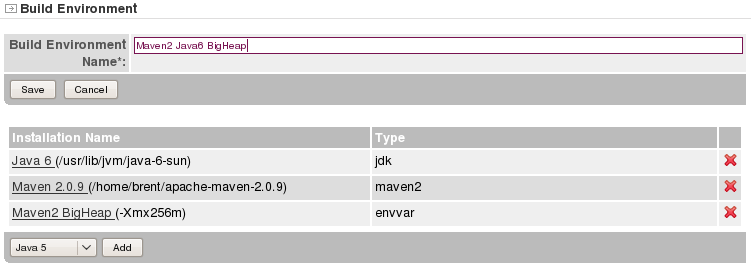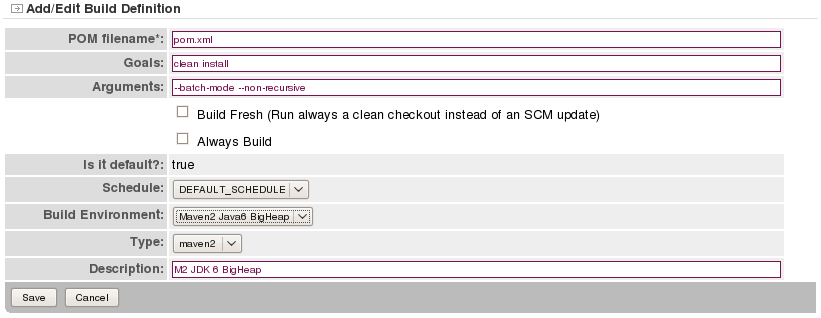

In continuum, Build Environments allow you to create and manage multiple build configurations. Once you have defined the Build Environments you can configure project Build Definitions or Build Definition Templates to use them.
Note: Build Environments affect the versions of specific tools used to execute builds and their environments. They are not intended to replace things like Maven build profiles.
Build Environments are named groupings of Installations. By grouping the collection of Tools and Environment Variables, you define a configuration that can be used to build a project. To define a Build Environment, you specify a human friendly name and add one or more Installations. Once defined, the Build Environment is available for use. You can then specify what Build Environment to use in your project's Build Definitions or in your Build Definition Templates. When continuum detects that a project needs to be built, it uses the Tool Installations to construct the paths to the expected executables (ie. Maven build definitions construct paths to the mvn executable and the java executable). Additional Installations are translated into name/value pairs that are passed through to the constructed command's environment.
As of Continuum 1.2.1, build environments can be used in releasing projects. This is set upon supplying the release prepare parameters during the Release preparation of the project.
The list box contains all available Build Agent Groups. The list box will only be visible if Distributed Builds is enabled in the General Configuration Page

When editing a Build Environment, the Installation list box contains all defined Installations. You can only specify a single Tool Installation per type (jdk, maven, maven2, ant). However, you may specify multiple Environment Variable Installations.

The way you configure builds to use your newly created Build Environments is by setting it in either a project Build Definition or in the continuum Build Definition Templates. The following example sets the Build Environment of a specific project's Build Definition.

Build notifications send along information about the environment in which the project was built.
Java Home version :
java version "1.6.0_11"
Java(TM) SE Runtime Environment (build 1.6.0_11-b03)
Java HotSpot(TM) Client VM (build 11.0-b16, mixed mode, sharing)
Builder version :
Maven version: 2.0.9
Java version: 1.6.0_11
OS name: "linux" version: "2.6.16.60-0.23-default" arch: "i386" Family: "unix"